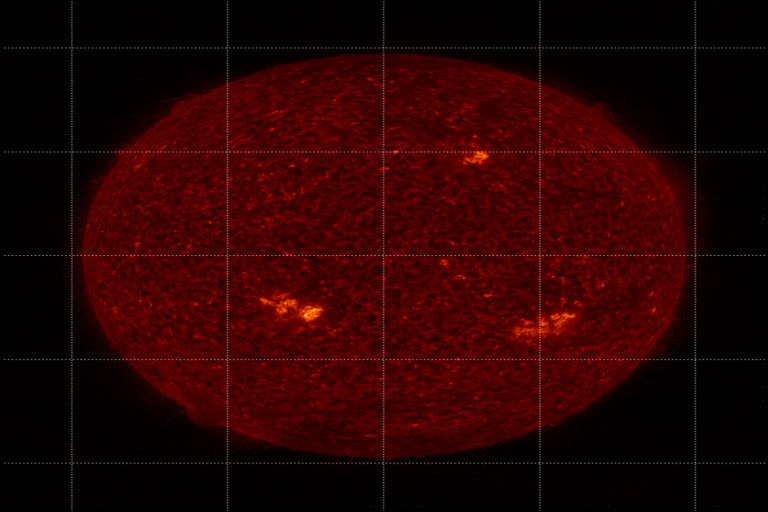Washington:Researchers are utilizing artificial intelligence (AI) techniques to calibrate some of NASA's images of the Sun, helping improve the data that scientists use for solar research.
Launched in 2010, NASA's Solar Dynamics Observatory (SDO) has provided high-definition images of the Sun for over a decade.
The Atmospheric Imagery Assembly, or AIA, is one of two imaging instruments on SDO and looks constantly at the Sun, taking images across 10 wavelengths of ultraviolet light every 12 seconds.
ETV Bharat / science-and-technology
AI helping researchers improve solar data from the Sun
A group of researchers is using artificial intelligence techniques to calibrate some of NASA’s images of the Sun, helping improve the data that scientists use for solar research. The new technique was published in the journal Astronomy & Astrophysics on April 13, 2021.

This creates a wealth of information of the Sun like no other, but - like all Sun-staring instruments -- AIA degrades over time, and the data needs to be frequently calibrated, NASA said in a statement.
To overcome this challenge, scientists decided to look at other options to calibrate the instrument with constant calibration.
Machine learning, a technique used in artificial intelligence, seemed like a perfect fit.
To start, the team would teach the algorithm what a solar flare looked like by showing it solar flares across all of AIA's wavelengths until it recognised solar flares in all different types of light.
Once the programme can recognise a solar flare without any degradation, the algorithm can then determine how much degradation is affecting AIA's current images and how much calibration is needed for each.
"This was the big thing. Instead of just identifying it on the same wavelength, we're identifying structures across the wavelengths," said Dr Luiz Dos Santos, a solar physicist at NASA's Goddard Space Flight Center in Greenbelt, Maryland, and lead author on the paper published in the journal Astronomy & Astrophysics.
"It's also important for deep space missions, which won't have the option of sounding rocket calibration. We're tackling two problems at once."
Since AIA looks at the Sun in multiple wavelengths of light, researchers can also use the algorithm to compare specific structures across the wavelengths and strengthen its assessments.
As machine learning advances, its scientific applications will expand to more and more missions.
"For the future, this may mean that deep space missions -- which travel to places where calibration rocket flights aren't possible -- can still be calibrated and continue giving accurate data, even when getting out to greater and greater distances from Earth or any stars," said NASA.